Culinary Class
How to Make Pesto
By: Hannah Lee Leidy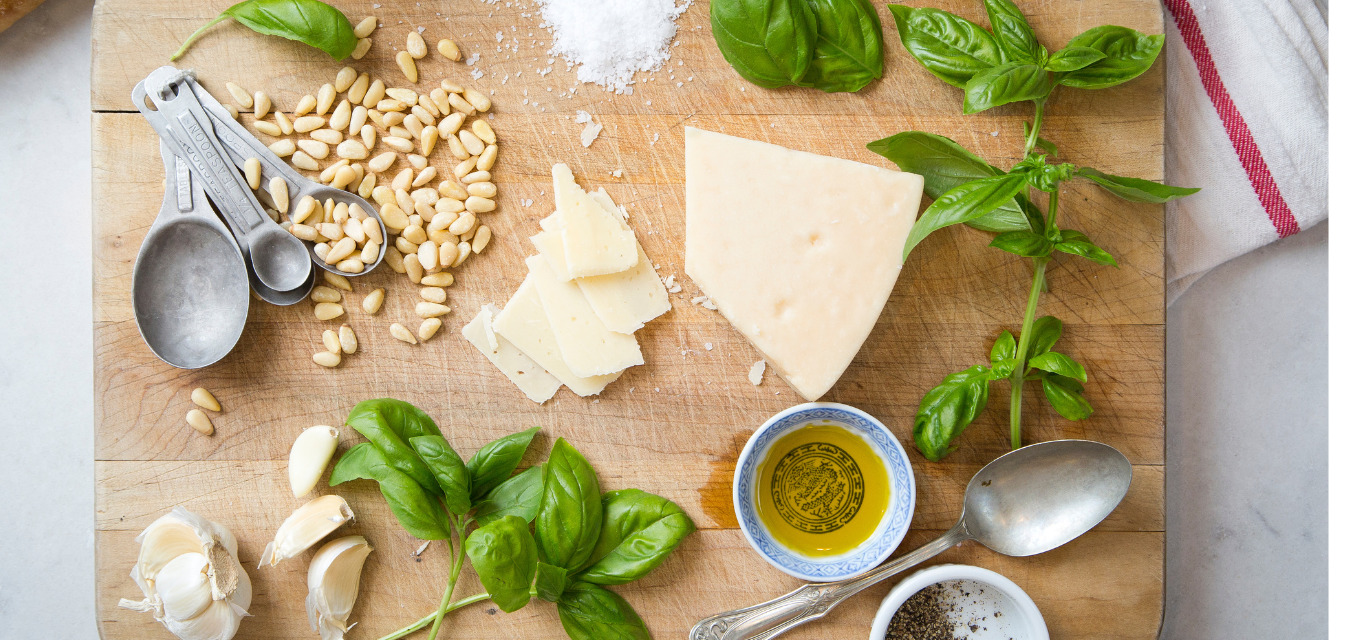
From the Italian word pestare, meaning to pound or to crush, pesto’s nomenclature is indicative of the fact that it was originally made by crushing its ingredients in a mortar with a pestle. You can certainly opt for the old-fashioned way; here, however, we make it in a food processor because it yields a faster and more consistent result.
Pesto is a vernal wonder—vibrant in color, creamy in texture, potent in flavor. A little goes a long way. But a lot goes further, so eat on up and invite friends and family to join you (Italians would approve).
Traditional pesto is made with fresh basil, garlic, parmesan cheese, pine nuts, and olive oil, and the traditional is dynamite. But it is also just a template: Caterpillars ate your basil? Don’t panic. Pesto made from other herbs and greens can be just as delicious as the traditional basil version. In fact, build pesto recipes that suit you. Don’t be tied down to pine nuts, olive oil, and parmesan. Use your favorite nuts and switch out the cheese. Just be sure the nuts are toasted and the cheese is firm. As for the oil, some combinations may do better with a more neutral oil like canola, while an infused oil could be the key to success for other pesto recipes.
We searched our recipes files to find a few ideas for how to make pesto, both the original with six detailed steps and a few other varieties.
TLP's Basil Pesto
3 cups basil leaves (loosely packed)
⅓ cup pine nuts
2-4 garlic cloves
minced
Pinch of salt
¼–½ cup olive oil (best quality you can find)
½ cup freshly grated parmesan (best you can afford and wait to grate!)
Black pepper
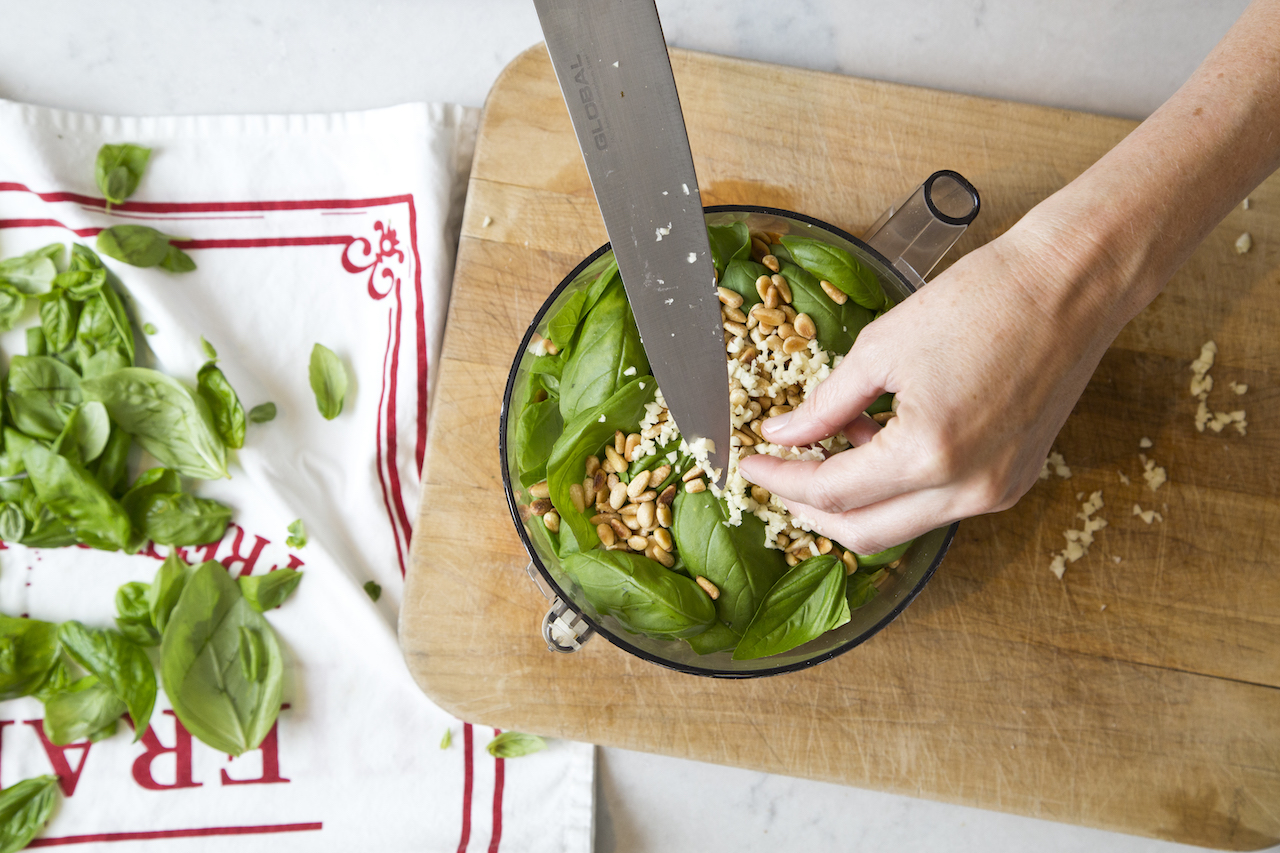
Step 1
Pick and Clean
Pick your basil leaves and wash them well. You can harvest a basil plant at any point in its life, just be sure not to ever take more than ⅓ of the plant. The size of leaves does not matter. Most harvest from the top, but you can harvest from anywhere.
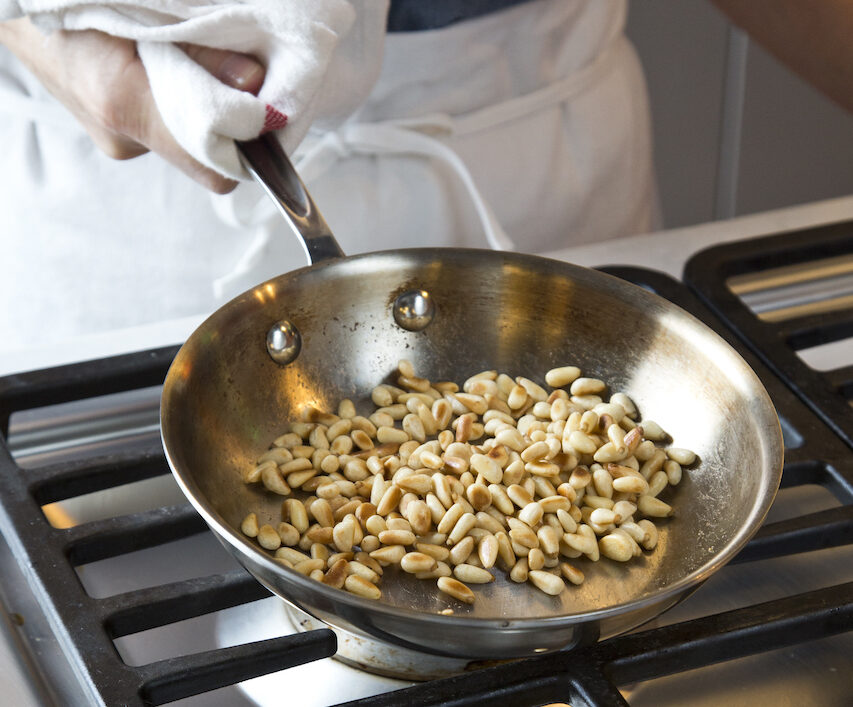
Step 2
Deepen Flavor
Toast the pine nuts for a richer flavor. Just add to a sauté pan over medium-low heat and they will start to turn a light brown and release an aroma after 2–3 minutes. Set aside to cool. (While cooling, grate the cheese.)
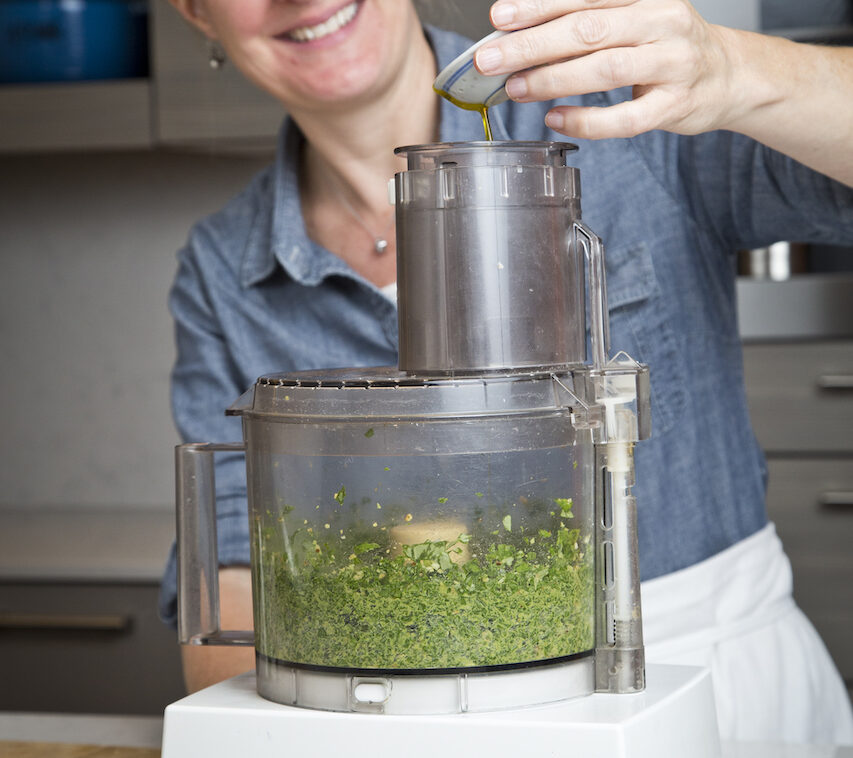
Step 3
Pulse Away
Add basil, toasted pine nuts, garlic, and salt to the bowl of the food processor. Pulse to uniform consistency, scraping down sides as needed. Can also do this by hand, using a mortar and pestle.
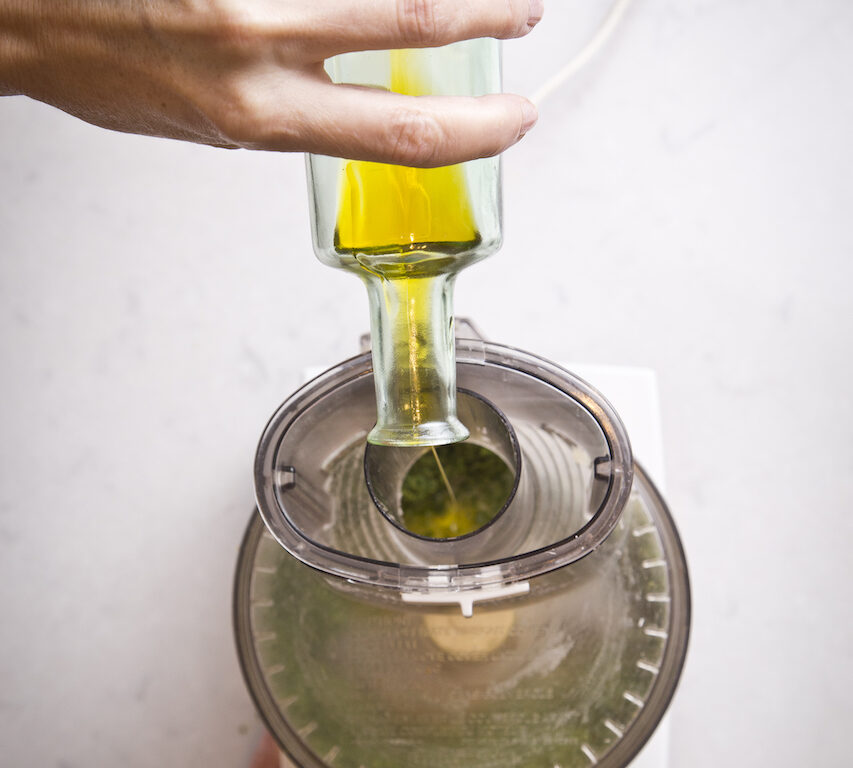
Step 4
Oil Her Up
With machine running, drizzle in the oil in a steady stream. Scrape down sides as needed. How much oil to use depends on how thick you like your pesto.
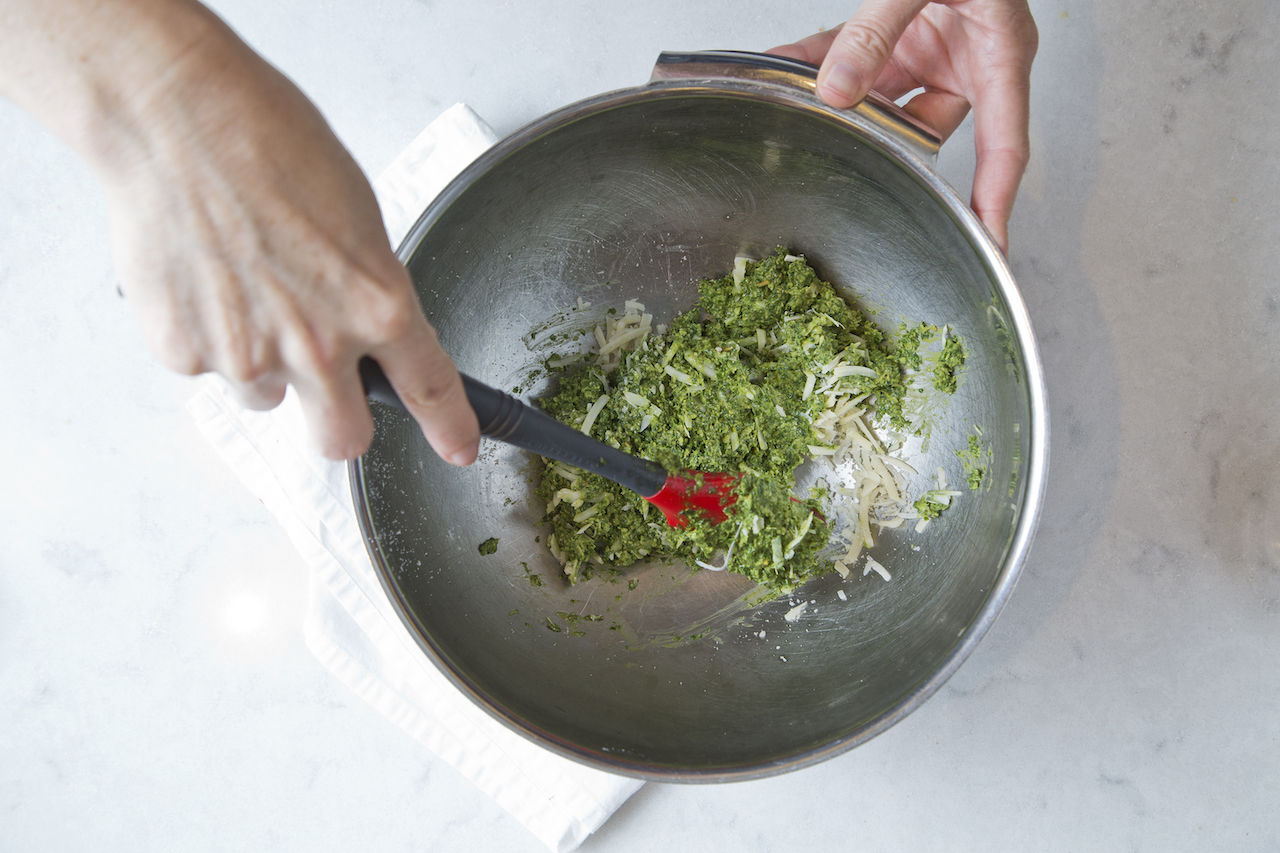
Step 5
Say Cheese
Transfer to a bowl and stir in cheese. Note: if you are freezing the pesto, don’t add the cheese—do that after you defrost and are ready to use. Add pepper to taste.
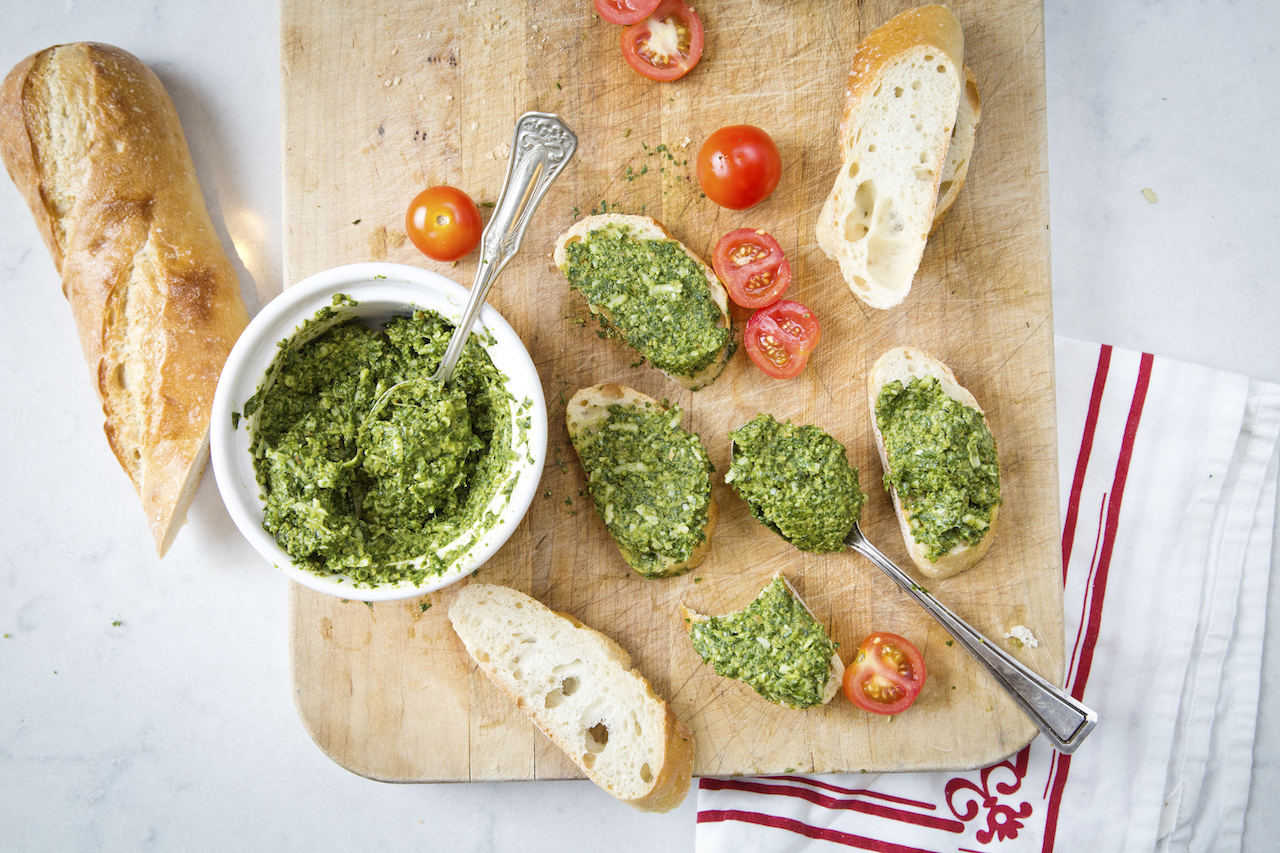
Step 6
Get Creative
Serve immediately in pasta, on pizza, as a dip or a dollop on anything (seafood, vegetables, potatoes, a baguette). Will keep in refrigerator for up to 1 week, and best to cover with a thin layer of oil to prevent browning.
Alternative Pesto Recipes
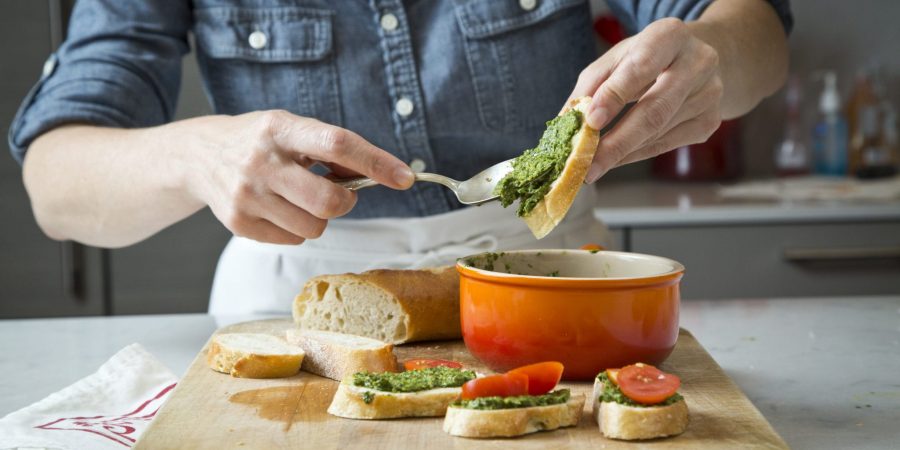
Carrot Top Pesto
Sprouted Basil Pesto
Basil Almond Pesto
share
Keep Cooking
How To Make Pan de Muerto
Ruben Ortega gives a step-by-step guide to perfectly spooky pan de muerto to celebrate [...]
How To Smoke a Turkey
Joe Kindred of North Carolina’s Kindred, Hello, Sailor, and milkbread, gives us his fail-proof [...]
How To Make Gnocchi
Chef Joe Kindred blends a Tuscan sugo with Thanksgiving flavors in this step-by-step guide [...]







